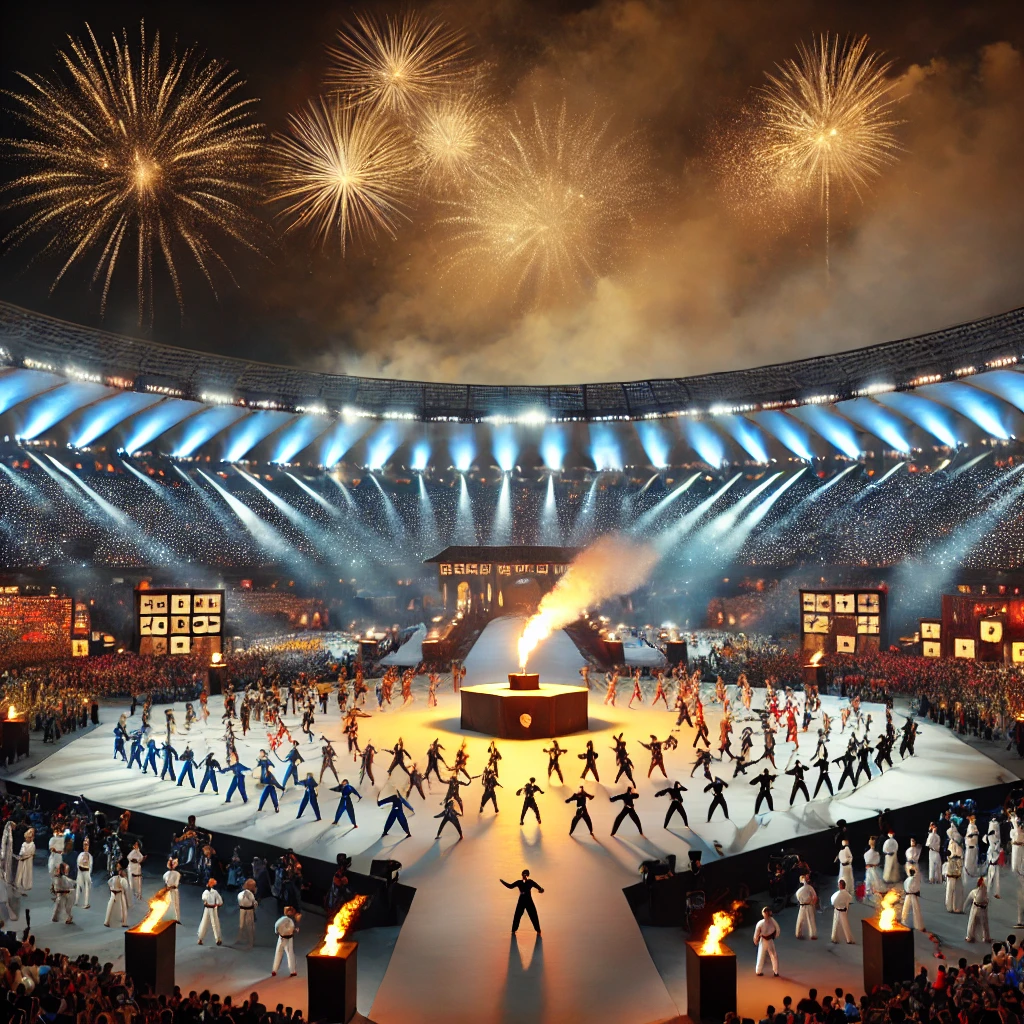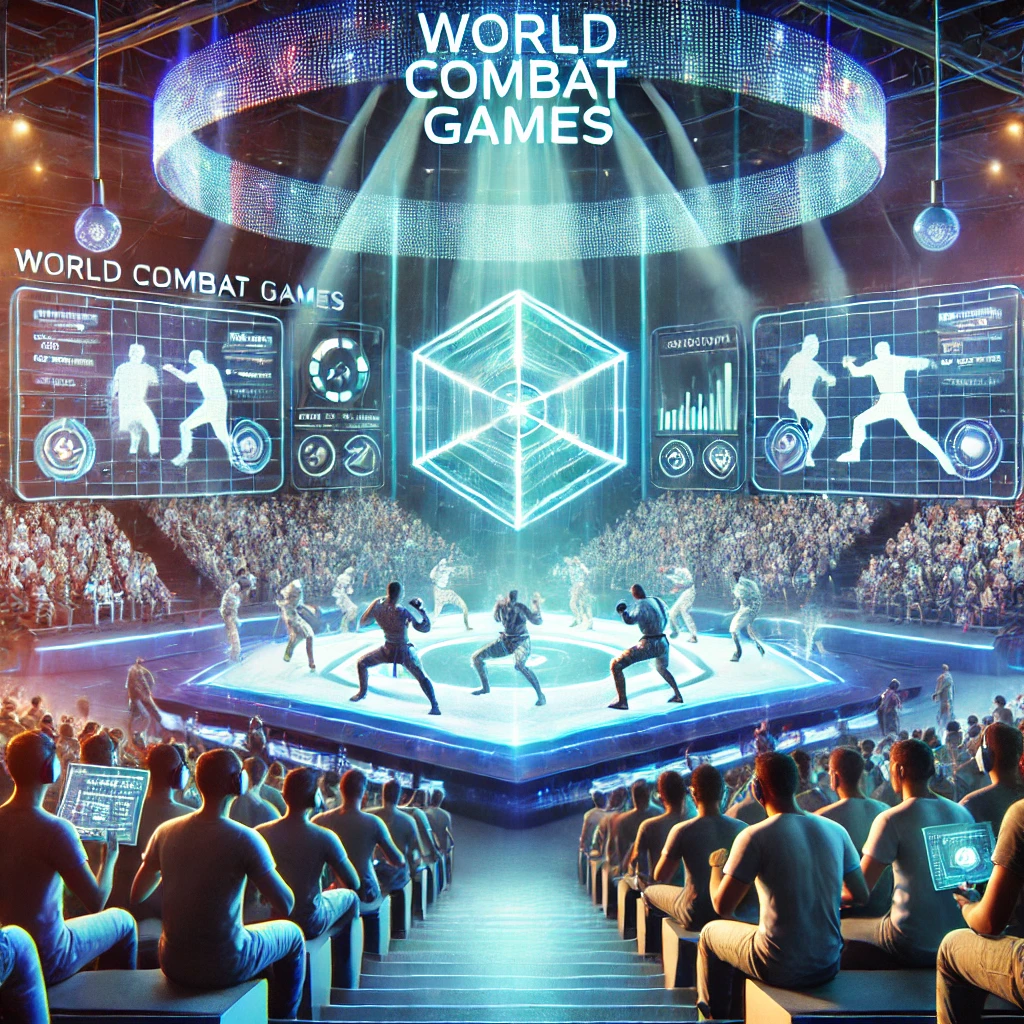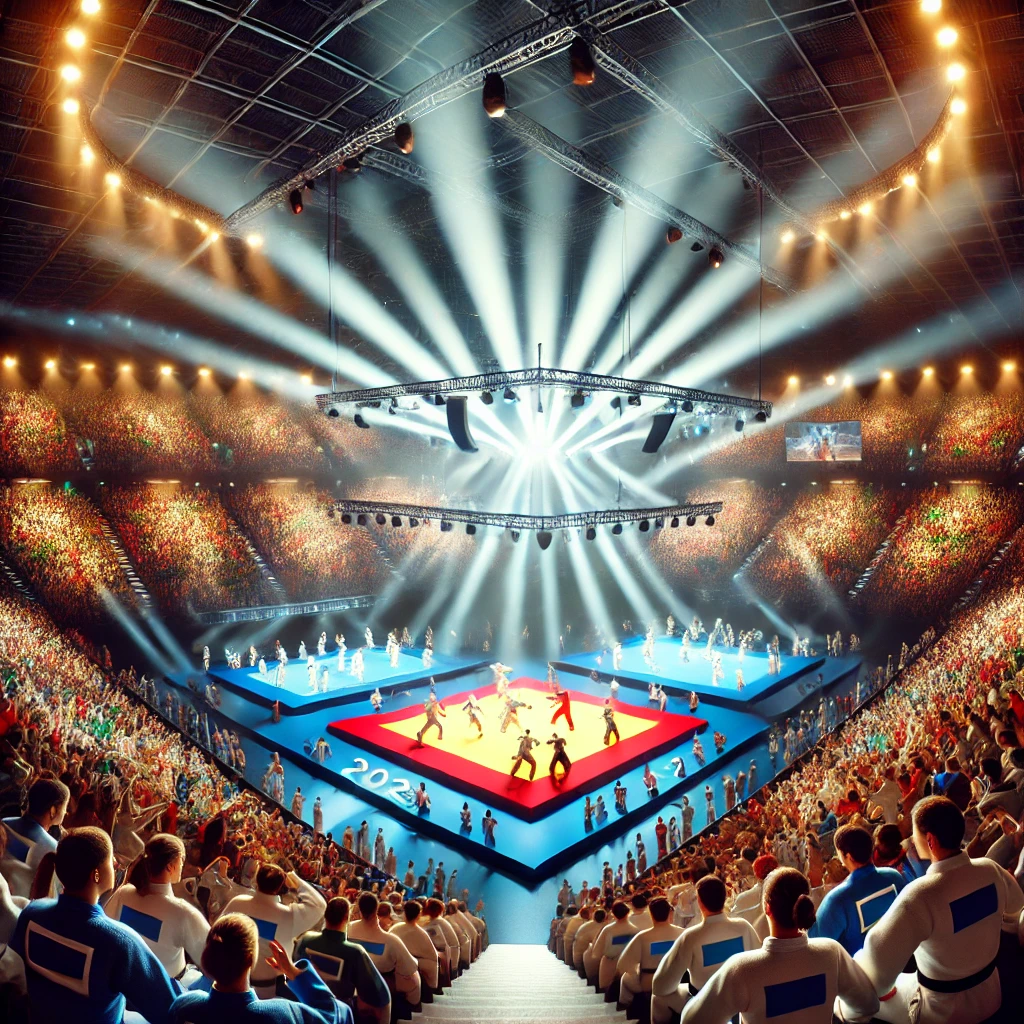The 2023 World Combat Games was a spectacle of skill, determination, and raw athleticism, showcasing some of the finest fighters from around the world. Held in Riyadh, Saudi Arabia, this year’s event brought together competitors from multiple martial arts and combat disciplines, each battling for the honor of being crowned a world champion. With record-breaking performances, unexpected upsets, and breathtaking moments, the 2023 edition was truly one for the history books.
The Significance of the World Combat Games

The World Combat Games (WCG) is a premier multi-sport event that celebrates martial arts and combat sports, bringing together elite fighters from diverse disciplines. It serves as a global platform where traditional and modern combat techniques converge, showcasing not only athletic excellence but also the cultural heritage and philosophies embedded in martial arts.
Unlike the Olympics, which includes a broad spectrum of sports, the WCG is dedicated solely to combat disciplines, making it a unique and highly anticipated event for martial arts enthusiasts worldwide. The event fosters unity among martial arts practitioners, providing a space for the exchange of techniques, strategies, and traditions that have shaped combat sports for centuries.
A Platform for Martial Arts Excellence
The WCG is more than just a competition—it is a celebration of the dedication, discipline, and resilience that define martial artists. Athletes train for years, honing their skills in anticipation of competing on such a prestigious stage. With high stakes and international recognition on the line, the Games offer an unparalleled opportunity for fighters to leave a lasting legacy.
For many countries, WCG represents a chance to demonstrate their dominance in combat sports. Nations like Japan, Russia, the United States, and Brazil, which have deep-rooted martial arts traditions, use the event to showcase their best talent. At the same time, emerging martial arts nations gain exposure and recognition, allowing new fighters to rise and make their mark on the global stage.
Promoting Combat Sports to a Global Audience
One of the primary missions of the WCG is to introduce combat sports to a wider audience. While some disciplines like boxing and judo have long been mainstream, others, such as sambo and savate, remain lesser-known outside their home regions. By featuring a diverse range of martial arts, the WCG provides a rare chance for spectators to witness and appreciate the depth and variety of combat sports.
The increased global media coverage in recent years has played a crucial role in growing the event’s reach. With live streaming, social media, and digital broadcasting, fans from all over the world can now engage with the competition in real-time, making the Games more accessible than ever before. This media expansion not only boosts viewership but also inspires future generations of martial artists to take up combat sports.
Preserving Tradition While Embracing Modernity
One of the most remarkable aspects of the WCG is its ability to preserve the deep-rooted traditions of martial arts while embracing modern training methods and competition formats. Many of the sports featured in the Games have centuries-old histories, passed down through generations of warriors and martial artists. By providing a global stage for these disciplines, WCG ensures that these traditions are not lost but instead continue to evolve alongside contemporary combat sports.
At the same time, advancements in sports science and technology have brought new dimensions to combat training. Athletes now incorporate high-tech analysis, AI-driven performance tracking, and modernized strength and conditioning programs into their regimens. The fusion of tradition and modernity makes the WCG a dynamic and evolving event that respects the past while pushing towards the future.
Fostering International Collaboration and Respect
The essence of martial arts is not only about competition but also about respect, discipline, and self-improvement. The WCG promotes these values by bringing together athletes from different cultures, allowing them to learn from each other both inside and outside the ring.
International collaboration is also evident in the coaching and training aspects of the Games. Many fighters seek training in different countries, learning techniques that are unique to particular regions. This cross-training fosters a deeper understanding of martial arts as a whole, breaking barriers and uniting people through their shared passion for combat sports.
Driving Economic Growth and Tourism
Hosting the World Combat Games provides significant economic benefits for the host country. Large-scale sporting events attract thousands of spectators, athletes, and journalists, generating revenue through tourism, hospitality, and sponsorships. The 2023 edition in Riyadh, for instance, demonstrated Saudi Arabia’s commitment to becoming a hub for international sporting events. The country invested heavily in infrastructure, ensuring that athletes and visitors had world-class facilities.
Beyond direct financial benefits, the WCG also plays a role in boosting the local combat sports scene. As host cities become associated with the Games, there is a lasting impact on martial arts academies, gyms, and grassroots training programs, ultimately inspiring more people to engage in combat sports.
A Stepping Stone to Olympic and Professional Careers
For many athletes, success at the WCG can be a stepping stone to greater opportunities. Some fighters use the event to prove their capabilities before transitioning to professional leagues or competing at the Olympics. Winning a WCG medal brings not just national pride but also career advancements, as top fighters often attract sponsorships, contracts, and invitations to train with elite coaches and teams.
Moreover, for combat sports that are not yet part of the Olympic Games, WCG provides a crucial platform to showcase their legitimacy and competitive value. Over time, the exposure and popularity gained through the WCG may lead to the inclusion of more combat sports in international multi-sport events.
The Opening Ceremony: A Grand Kickoff

The 2023 World Combat Games opened in a spectacular fashion, setting the tone for an exhilarating and prestigious competition. The grand opening ceremony, held at a state-of-the-art arena in Riyadh, was a perfect blend of cultural heritage, modern technology, and martial arts excellence, showcasing the grandeur of the Games to a global audience. The event was attended by dignitaries, top athletes, martial arts legends, and thousands of excited spectators, all eager to witness history unfold.
A Spectacle of Light, Sound, and Motion
The ceremony began with a breathtaking light and sound show, combining advanced projection mapping, pyrotechnics, and holographic displays to bring the rich history of combat sports to life. The dazzling display paid tribute to ancient warriors, legendary martial artists, and the evolution of hand-to-hand combat through the centuries. The stadium was illuminated with a synchronized laser show, creating an electrifying atmosphere that immersed the audience in the spectacle.
A Parade of Champions
One of the most anticipated moments of the ceremony was the Parade of Nations, where athletes from over 40 participating countries marched proudly into the arena, waving their national flags. The parade highlighted the international diversity of the Games, with competitors from different cultures coming together to celebrate their shared passion for martial arts.
Each nation was introduced with a short video presentation, showcasing their combat sports history, legendary fighters, and contributions to martial arts. The energy in the stadium was palpable as fans cheered for their respective countries, demonstrating the unifying power of combat sports on a global scale.
Martial Arts Demonstrations: A Tribute to Tradition
The opening ceremony also featured an incredible series of martial arts demonstrations, performed by masters and athletes from various disciplines. The performances were a mesmerizing display of skill, discipline, and power, giving audiences a taste of the precision and dedication required in combat sports.
- Samurai Sword Fighting – A breathtaking kendo and kenjutsu demonstration from Japan, featuring traditional armor and precision katana strikes.
- Shaolin Kung Fu Showcase – Shaolin monks from China performed gravity-defying acrobatics, demonstrating their legendary strength, agility, and mind-body connection.
- Muay Thai Rituals – A tribute to the “Art of Eight Limbs,” showcasing the traditional Wai Kru Ram Muay pre-fight ritual, followed by a powerful display of striking techniques.
- Greco-Roman Wrestling Techniques – A dynamic performance highlighting the raw strength and technical finesse of Olympic-style wrestling.
- Capoeira Performance – A rhythmic and fluid display of Brazilian capoeira, blending martial arts, dance, and acrobatics into a visually stunning routine.
Cultural Elements: A Celebration of Saudi Heritage
As the host nation, Saudi Arabia took pride in showcasing its rich culture and heritage throughout the ceremony. Traditional Saudi Arabian dancers, dressed in vibrant attire, performed the famous Ardha (Sword Dance), symbolizing strength, unity, and honor. The performance was accompanied by rhythmic drumming and poetic chants, creating a powerful and moving moment in the ceremony.
The opening also paid homage to the historical warriors of the Middle East, with a dramatic reenactment of ancient battles, emphasizing the deep-rooted combat traditions in Arab history. The segment was choreographed with stunning realism, featuring horseback warriors, traditional weapons, and immersive storytelling that transported the audience to a bygone era of legendary fighters.
Speeches from Dignitaries and Sporting Icons
Following the artistic displays, a series of inspiring speeches were delivered by key figures in the world of combat sports. The President of the World Combat Games Federation spoke about the importance of martial arts in promoting discipline, respect, and perseverance. He emphasized the unifying nature of combat sports, highlighting how they transcend borders and foster camaraderie among nations.
Several legendary fighters and Olympic champions were also invited to share their experiences, offering words of encouragement to the competitors. Their speeches were filled with motivational anecdotes, inspiring athletes to push beyond their limits and embrace the warrior spirit that defines martial arts.
Official Declaration and Flame Lighting Ceremony
The pinnacle of the ceremony was the official declaration of the Games’ commencement, followed by the lighting of the Combat Flame—a symbolic moment that marked the beginning of the competition. The torch relay featured renowned martial artists from different generations, each carrying the flame before passing it to the final torchbearer—a legendary champion who ignited the cauldron in a breathtaking display of fire and passion.
As the flames roared to life, fireworks lit up the night sky, signaling the official start of the 2023 World Combat Games. The crowd erupted into cheers, and a powerful energy filled the air, signifying the beginning of what promised to be an unforgettable tournament.
A Lasting Impression
The opening ceremony of the 2023 World Combat Games was a true masterpiece, perfectly balancing tradition and modern spectacle. It paid homage to the history of combat sports while embracing the future, setting the stage for a competition filled with honor, skill, and sportsmanship.
From the awe-inspiring martial arts performances to the cultural showcases and the emotional speeches, the event left a lasting impression on athletes, fans, and officials alike. It reinforced the idea that combat sports are more than just physical contests—they are a celebration of human perseverance, discipline, and the relentless pursuit of excellence.
As the lights dimmed and the athletes took their places, one thing was certain—the 2023 World Combat Games had begun, and history was about to be made.
Major Disciplines and Categories
The 2023 World Combat Games featured an impressive lineup of combat sports disciplines, each with its unique techniques, rules, and historical significance. From traditional martial arts with ancient origins to modern combat sports that have evolved through years of competitive refinement, the event showcased the very best of global combat sports culture.
Each discipline tested not just the physical strength and skill of the athletes, but also their mental endurance, tactical strategies, and adaptability in high-pressure situations. Below, we explore the most significant categories and the highlights from each competition.
1. Judo
Judo has been a staple of combat sports since its introduction to the global stage. The 2023 competition saw some of the best judokas from around the world engaging in intense grappling and throws. Japan, the birthplace of judo, once again dominated the competition, but countries such as France, Georgia, and Brazil also put up strong performances.
The judo matches were a display of both power and precision. Athletes showcased their ability to control their opponents using leverage, balance, and quick reflexes. The final match in the men’s heavyweight category was a breathtaking showdown between a veteran Japanese champion and a young French contender, lasting over ten minutes in an intense golden-score battle. Spectators were also treated to spectacular ippons, seamless transitions, and counters that demonstrated the strategic brilliance of elite judokas.
2. Boxing
The boxing events delivered some of the most thrilling bouts of the tournament. Fighters showcased their speed, endurance, and technical skill in both amateur and professional categories. The finals witnessed an unforgettable clash between the reigning champion from Cuba and a young prodigy from Kazakhstan, ending in a dramatic knockout in the last round.
Boxing enthusiasts were on the edge of their seats as fighters displayed their unique styles—some relying on aggressive power punches, while others showcased remarkable defensive footwork. One of the most surprising moments was an underdog victory by a previously unranked boxer from the Philippines, whose relentless pressure stunned his highly ranked opponent. The tournament also emphasized the significance of adaptability, as boxers had to adjust their techniques against unpredictable adversaries in each round.
3. Wrestling
Both Greco-Roman and freestyle wrestling competitions were packed with adrenaline-pumping moments. The United States and Russia, two wrestling powerhouses, engaged in fierce battles for the gold. The 2023 Games also saw an unexpected rise in dominance from India, proving that the country is emerging as a wrestling powerhouse.
Wrestling at the WCG was a perfect mix of technique, endurance, and explosive power. In Greco-Roman wrestling, athletes demonstrated remarkable upper-body control, while freestyle wrestling was characterized by fast-paced takedowns and counters. The finals featured a particularly gripping bout where a Russian wrestler narrowly defeated his American rival with a last-second takedown, securing gold in a controversial yet brilliant finish.
4. Kickboxing
Kickboxing enthusiasts were treated to some of the most aggressive and fast-paced fights of the tournament. Fighters from the Netherlands and Thailand put on incredible performances, showcasing elite-level striking, power, and resilience. The championship fight between a Dutch legend and a Thai Muay Thai specialist was hailed as one of the best matches in WCG history.
The kickboxing division included K-1 rules and full-contact bouts, ensuring a thrilling display of striking techniques. Fighters demonstrated exceptional conditioning, with some bouts going the full distance, testing their stamina and durability. The crowd erupted in excitement during the semi-finals when a Dutch kickboxer executed a perfectly timed spinning heel kick, knocking out his opponent instantly—one of the most talked-about moments of the event.
5. Sambo
Sambo, a sport with deep roots in Russia, was another highlight of the games. Known for its mix of judo and wrestling techniques, the competition saw intense matchups, particularly in the heavyweight division. The gold medal fight between a Russian veteran and a Brazilian newcomer kept the audience on the edge of their seats.
Sambo’s dynamic mix of striking and grappling made it one of the most unpredictable sports in the competition. Some matches ended quickly due to explosive submission attempts, while others turned into long, grueling battles of endurance. The growing international representation in Sambo was evident, as athletes from Central Asia and Latin America began to make a name for themselves, challenging traditional Russian dominance in the sport.
6. Karate
Karate, a sport known for its discipline and precision, had some of the closest matches in WCG history. Japanese and Iranian fighters dominated the competition, with lightning-fast strikes and impeccable defensive tactics. The finals saw a perfect blend of traditional techniques and modern adaptations, making it a must-watch event.
One of the most anticipated moments was the showdown between two longtime rivals from Japan and Iran, whose exchanges of lightning-fast punches and counterattacks left judges with one of the toughest decisions of the tournament. The elegance and sportsmanship displayed in the kata (forms) category also captivated audiences, proving that karate remains one of the most technical martial arts in existence.
7. Taekwondo
Taekwondo fighters brought a unique flair to the Games, demonstrating their high-flying kicks and lightning-fast reflexes. South Korea remained the dominant force, but there were surprises in store as younger fighters from European and Middle Eastern nations made their mark on the international stage.
A remarkable highlight was the emergence of a teenage sensation from Turkey, who stunned the crowd by knocking out an Olympic medalist with a devastating spinning kick. The precision and speed of the taekwondo athletes made their matches some of the most entertaining in the competition, showcasing the evolution of this ancient martial art into a dynamic global sport.
Standout Performances and Rising Stars

Every major tournament introduces a new wave of talent, and the 2023 World Combat Games was no exception. Several athletes stood out, making a name for themselves on the global stage. These breakout performances not only reshaped rankings but also captivated fans worldwide.
- Akira Tanaka (Japan, Judo) – With flawless execution and remarkable speed, Tanaka claimed gold, solidifying himself as one of the top judokas in the world. His ability to transition from defense to attack in a split second left his opponents with no room for counterplay, making him one of the most talked-about competitors of the tournament.
- Luis Mendoza (Cuba, Boxing) – Mendoza’s power and technique earned him the championship title after a series of dominant victories. His knockout win in the final, where he displayed a perfect mix of speed and precision, will be remembered as one of the best moments of the event.
- Amit Singh (India, Wrestling) – A young Indian wrestler who shocked the world with his upset victory against a former world champion. His tactical intelligence and relentless energy helped him secure a historic win for India, cementing his status as a rising star.
- Elena Petrova (Russia, Sambo) – With her innovative fighting style, Petrova secured the gold, proving she is a force to be reckoned with. Her flawless grappling transitions and unexpected submission attempts made her the most exciting Sambo athlete to watch.
- Carlos Herrera (Spain, Karate) – A rising karateka who impressed judges and fans alike with his impeccable form and tactics. His unwavering focus and precise striking allowed him to take home the championship, proving that Spain is becoming a strong contender in international karate.
The Most Memorable Fights
Certain fights stood out as legendary battles that will be remembered for years to come. These matchups showcased the true essence of combat sports, combining raw athleticism, strategic brilliance, and unbreakable willpower.
- Boxing: Cuba vs. Kazakhstan Final – The final boxing match of the tournament was a true test of endurance and power, ending with a dramatic knockout in the last minute. Both fighters displayed masterful footwork and counterpunching, with the Kazakh fighter initially leading on points. However, a devastating left hook from the Cuban champion turned the tables, resulting in an unforgettable finish.
- Kickboxing: Dutch Champion vs. Thai Warrior – A technical masterclass filled with high-impact strikes, showcasing the contrast in styles between Dutch kickboxing and traditional Muay Thai. The Dutch fighter utilized devastating low kicks, while the Thai competitor executed precise elbows and clinch work. The final round was a relentless exchange, leaving the judges with a razor-thin decision that favored the Dutch legend.
- Judo: Japan vs. Georgia – The judo finals featured a breathtaking combination of speed, strength, and tactical brilliance, making it one of the most intense matches of the Games. The Georgian fighter dominated the early exchanges, but a last-minute counter throw from the Japanese competitor secured an incredible ippon victory.
- Wrestling: USA vs. Russia Heavyweight Showdown – A battle of titans in the wrestling category that saw a last-second reversal by the Russian wrestler, snatching victory from the American favorite. The match was filled with electrifying takedowns, counterattacks, and sheer brute strength, making it an instant classic.
Looking Ahead: The Future of the World Combat Games

The 2023 edition of the World Combat Games reaffirmed its status as one of the most prestigious platforms for martial artists and combat athletes worldwide. As we look to the future, the evolution of the Games is set to bring new developments, opportunities, and challenges that will shape the next generation of combat sports.
Expanding Global Reach
One of the most exciting prospects for the World Combat Games is its continued expansion into new regions. The 2023 event in Riyadh demonstrated the ability of the Games to attract a global audience, and future editions are expected to be hosted in various countries across Asia, Europe, and the Americas. By moving the Games to different locations, organizers can introduce combat sports to new cultures, encourage regional participation, and promote martial arts worldwide.
Integration of Emerging Combat Sports
The inclusion of new combat sports is another key factor in the evolution of the World Combat Games. Traditional disciplines such as judo, boxing, and wrestling have always been mainstays, but there is growing interest in newer or less mainstream martial arts. Sports like mixed martial arts (MMA), submission grappling, and historical European martial arts (HEMA) could find a place in future editions, adding variety and attracting different demographics of fans.
Advancements in Training and Technology
The next decade will see significant advancements in training methodologies and sports technology. Athletes will benefit from high-tech wearable devices, AI-driven performance analytics, and cutting-edge rehabilitation techniques. This will not only elevate the level of competition but also ensure greater athlete safety and longevity in their careers. The use of virtual reality (VR) for simulation training and digital scoring systems for fairer judging may also be introduced to enhance the credibility and accuracy of the Games.
Growing Media and Sponsorship Deals
With combat sports gaining increasing attention worldwide, sponsorship and media partnerships are expected to grow substantially. Streaming services and digital platforms will play a pivotal role in reaching a larger audience, providing fans with in-depth coverage, behind-the-scenes access, and interactive viewing experiences. More financial investment from sponsors means better infrastructure, higher prize money for athletes, and greater incentives for up-and-coming talent to pursue careers in combat sports.
Women’s Combat Sports and Youth Development
The rise of women’s participation in combat sports is a trend that will continue to shape future editions of the Games. More initiatives are expected to encourage female athletes to compete at the highest levels, ensuring equal opportunities and representation across all disciplines. Additionally, youth development programs will be prioritized, with junior divisions and grassroots-level training camps helping to nurture the next wave of combat sports superstars.
Sustainability and Ethical Considerations
As global sporting events move toward more sustainable practices, the World Combat Games will likely implement initiatives focused on environmental responsibility. Future host cities may introduce green venues, reduced carbon footprints, and sustainable logistics. Ethical considerations such as fair pay, athlete rights, and mental health support will also become a greater focus, ensuring the well-being of competitors both in and out of the ring.



